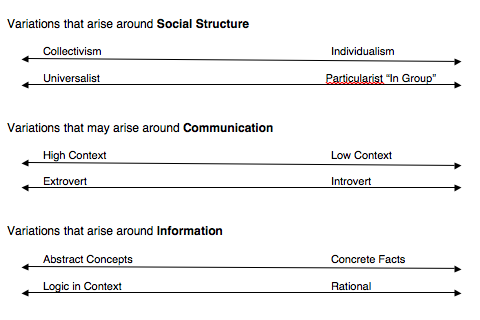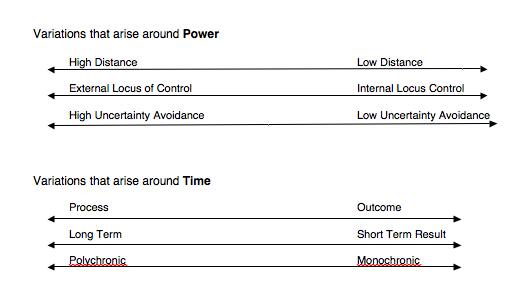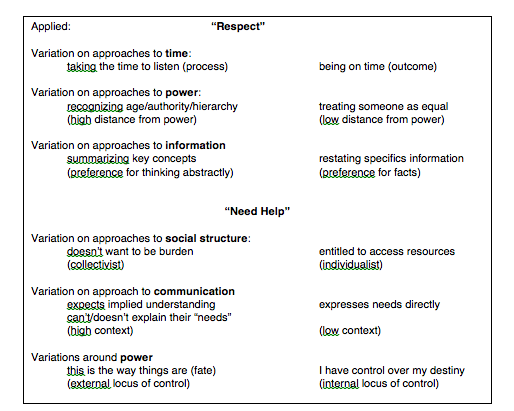Reflections on Buddhist Contributions to Social Justice [Main Post with PDF]
Cultivating Understanding [5 of 10]
Cultivating Awareness [7 of 10]
Cultivating Understanding [5 of 10]
Cultivating Awareness [7 of 10]
3. Cultivating Humility
To cultivate humility in this context asks that we see the assumptions that underpin what we know and how we see the world; it asks us to recognize that others may have different views. We cultivate the capacity for cultural humility by examining our own perspectives, so that we may listen more effectively to different perspectives.
Diverging Perspectives and Variations[1]
How does your environment/experience influence your perspective?
To cultivate humility in this context asks that we see the assumptions that underpin what we know and how we see the world; it asks us to recognize that others may have different views. We cultivate the capacity for cultural humility by examining our own perspectives, so that we may listen more effectively to different perspectives.
Diverging Perspectives and Variations[1]
How does your environment/experience influence your perspective?
Are the bold vertical lines the same or different lengths?
(a) People acculturated to perspective see the right-hand line as longer than the left.
(b) As background lines do not suggest a perspective, one can see the lines are the same length.
When have the capacity for humility, we step back from the things we ‘know’ and we do not assume to know another’s experience. We are able to recognize our assumptions, to question what we know without fear, and to hear/see fully the experience of another without defense.
Below are continuums where perspectives are known to vary. It is important not to think of these variations in order to “categorize” people. Rather, these divergences provide an opportunity for you to begin to recognize the preferences that inform how you see the world. Applying this skill to the familiar aspects of your daily life is the essence of “cultural humility” and developing the ability to ask questions with open-hearted curiosity about what things mean to another person gives you the opportunity to become an explorer in the adventure of everyday life.
[1] Whitehouse, Roger. The Uniqueness of Individual Perception, in Information Design, ed. Jacobsen, R. MIT Press, 1999.
Figure 2. Continuums that underpin conflict. [1]
[1] Adapted from Avruch K, Culture & Conflict Resolution, United States Institute of Peace Press, 1998. Chew PK, The Conflict & Culture Reader, NYU Press 2001. LeBaron M, Bridging Cultural Conflicts, Jossey-Bass Press, 2003. "Mapping Cultures: Strategies for Effective Intercultural Negotiations." In Second Track/Citizens’ Diplomacy, edited by J. Davies and E. Kaufman. Lanham, MD: Rowman & Littlefield Publishers, Inc.: 149-160. Moore, C.W., and Peter Woodrow. 2002. As well as Myers-Brigg Literature.
When we seek to understand viewpoints of others along the continuum, we share our power to create an inclusive space. Unfortunately, often, efforts at inclusion seek “diversity” based upon people who “look” different or who have ‘different’ group attributes; this mindset perpetuates divisive identities and fails to embrace the totality of ourselves and denies the humanity of the individuals being lumped into a “group.” No group sees things uniformly; the continuums are not intended for categorizing into ‘group’ behavior, e.g. “X people are …”. Individuals are complex; the myriad influences that inform one’s perspective cannot be linked to a generic ‘group’ identity. Rather, we may see how our many influences shape our perspectives along these continuums and how different contexts change our perspective.
We may see that we spans a continuum- at one end in one situation and at the other end in another situation. We rarely see things only ‘one’ way in all situations. Seeing that we have the ability to be at different points of a continuum enables us to grow our comfort with difference and to cultivate curiosity and compassion for different perspectives. With humility, we create an inclusive and collaborative space, because we embrace that we alone cannot see all points of a continuum, and we recognize that all points along the continuum are part of and inform our experience.
When we use the continuums effectively, we seek to include others with different experiences along the spectrum, not because they are “other,” but rather because their experience is part of our experience. If we look deeply, we may learn how the perspective shared by someone else seemingly ‘different’ enables us to see how that experience manifests within our lives. Thus, when we cultivate the capacity for humility, we use the continuums as a tool to deepen our integrity and understanding.






 RSS Feed
RSS Feed